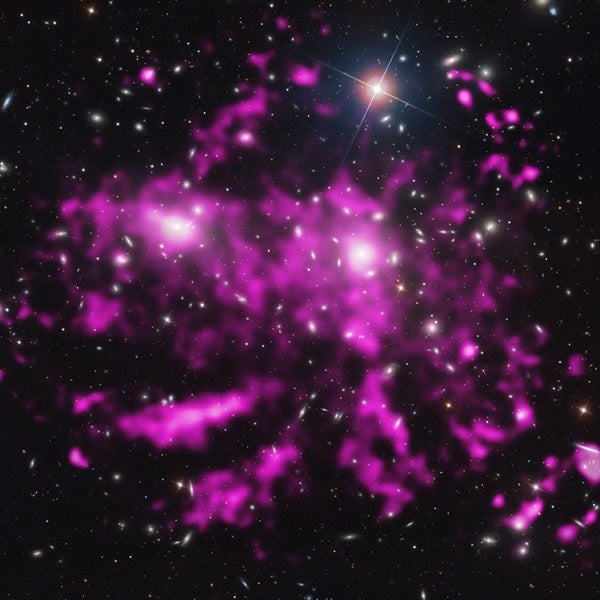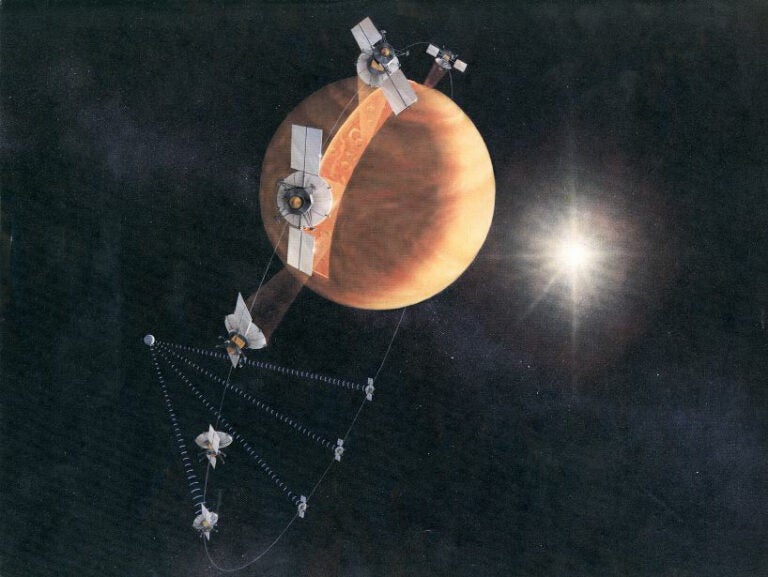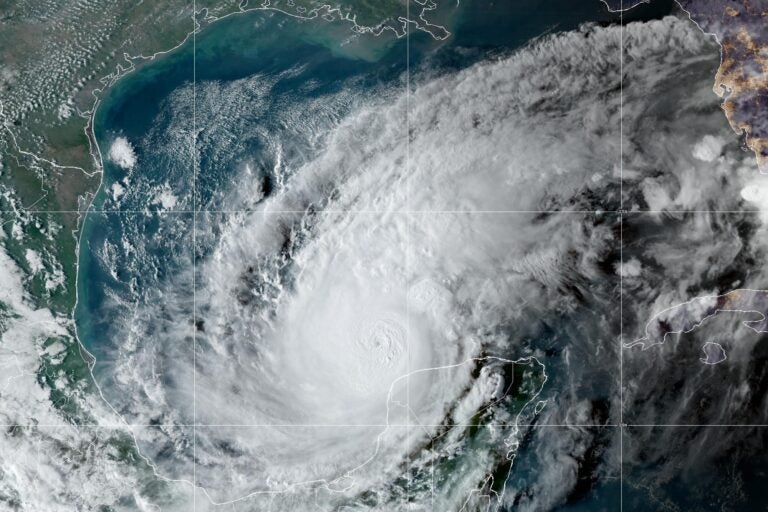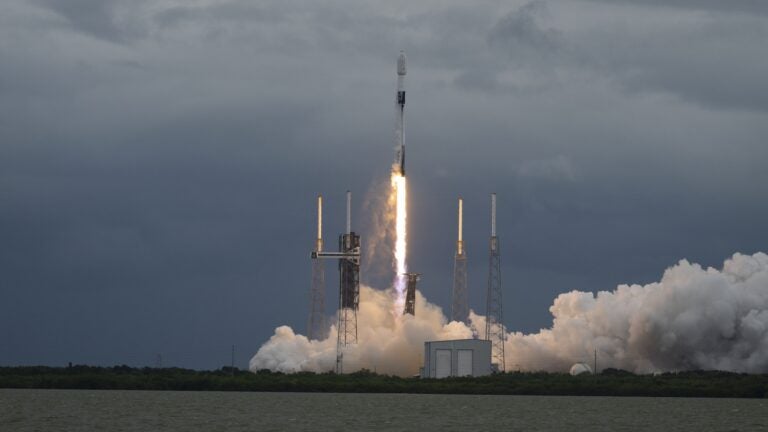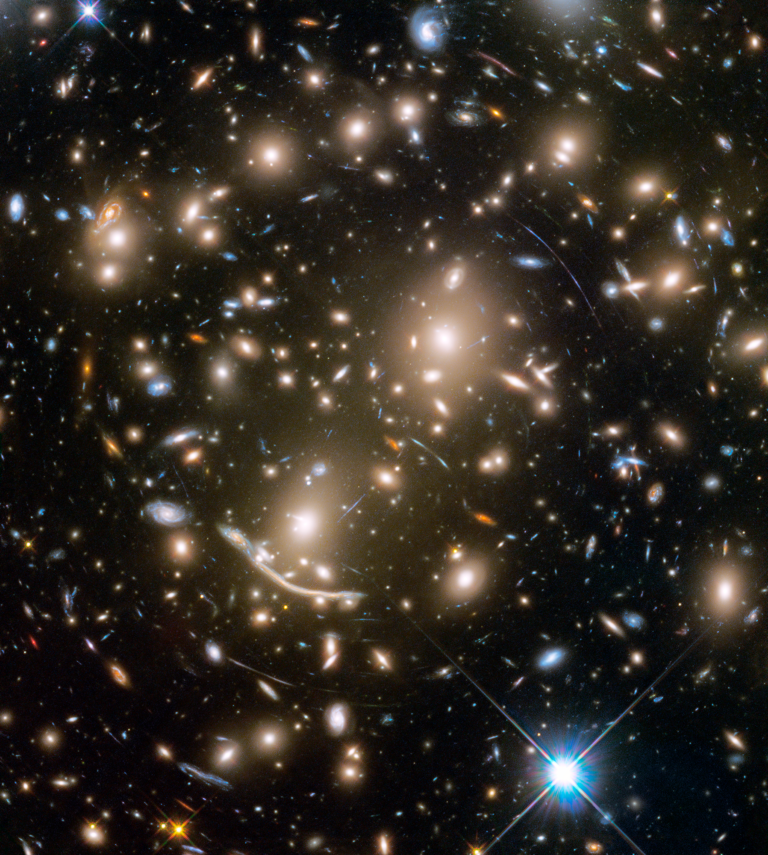A new composite image, with Chandra data in pink and optical data from the Sloan Digital Sky Survey appearing in white and blue, features these spectacular arms. In this image, the Chandra data have been processed so extra detail is visible.
The X-ray emission is from multimillion-degree gas, and the optical data shows galaxies in the Coma cluster, which contain only about one-sixth the mass in hot gas. Only the brightest X-ray emission is shown here, to emphasize the arms, but the hot gas is present over the entire field of view.
Researchers think that these arms most likely formed when smaller galaxy clusters had their gas stripped away by the head wind created by the motion of the cluster through the hot gas, in much the same way that the head wind created by a roller coaster blows the hats off riders.
Coma is an unusual galaxy cluster because it contains not one, but two giant elliptical galaxies near its center. These two are probably the vestiges from each of the two largest clusters that merged with Coma in the past. The researchers also uncovered other signs of past collisions and mergers in the data.
From their length and the speed of sound in the hot gas (about 2.5 million mph [4 million km/hr]), the newly discovered X-ray arms are estimated to be about 300 million years old, and they appear to have a rather smooth shape. This gives researchers some clues about the conditions of the hot gas in Coma. Most theoretical models expect that mergers between clusters like those in Coma will produce strong turbulence, like ocean water churned by many passing ships. Instead, the smooth shape of these lengthy arms points to a rather calm setting for the hot gas in the Coma cluster, even after many mergers.
Large-scale magnetic fields are likely responsible for the small amount of turbulence that is present in Coma. Estimating the amount of turbulence in a galaxy cluster has been a challenging problem for astrophysicists. Researchers have found a range of answers, some of them conflicting, so observations of other clusters are needed.
Two of the arms appear to be connected to a group of galaxies located about 2 million light-years from the center of Coma. One, or both, of these arms connects to a larger structure seen in the XMM-Newton data and spans a distance or at least 1.5 million light-years. A very thin tail also appears behind one of the galaxies in Coma. This is probably evidence of gas being stripped from a single galaxy, in addition to the groups or clusters that have merged there.

